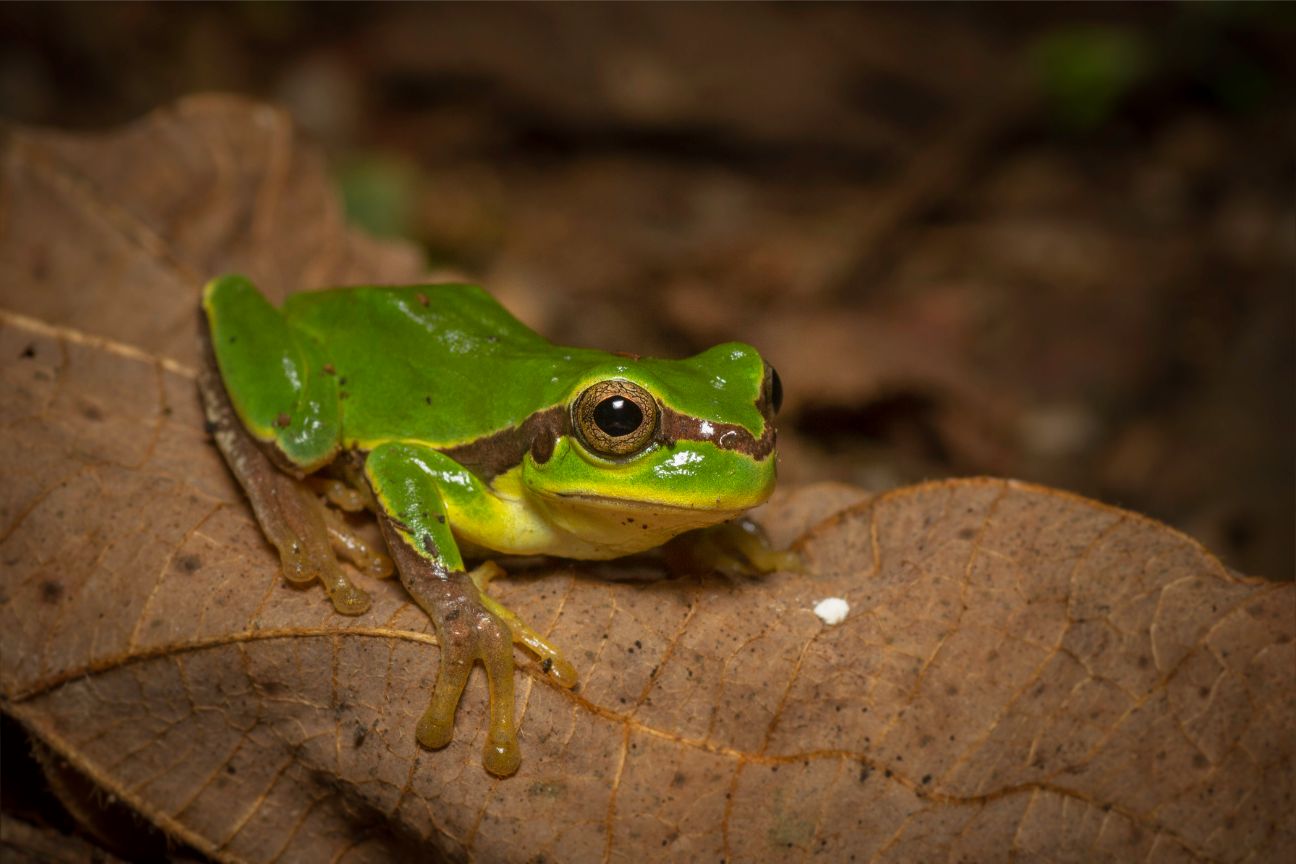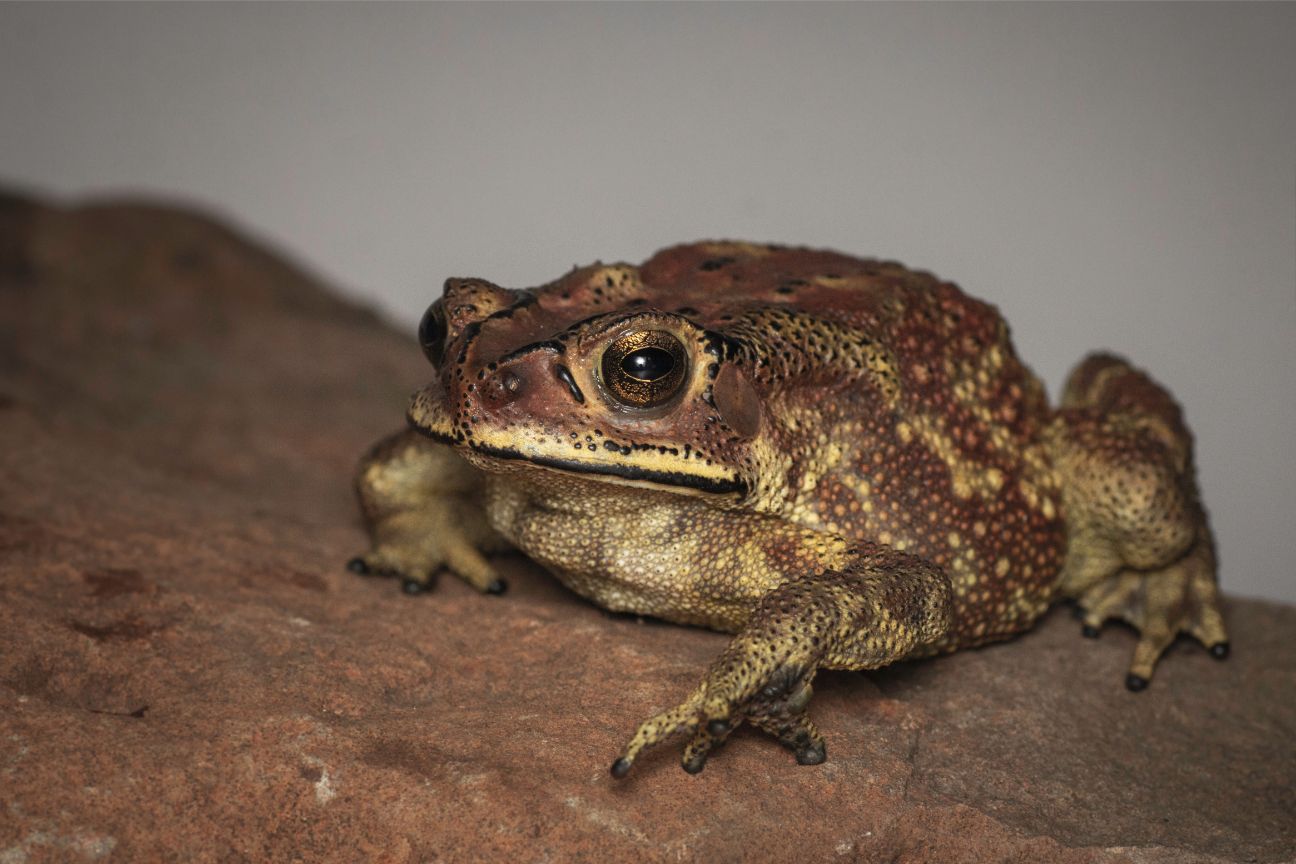The animal kingdom never ceases to fascinate me with its similar-looking creatures. If you’ve ever wondered how a frog is different from a toad, here’s a handy guide!
Frogs and toads are amphibians that are found in almost all parts of the world. Amphibians are species that can live on both land and water. The word amphibian literally means ‘double life’, highlighting the ability of amphibians to live in the two environments – land and water. Both frogs and toads fall under the order Anura. However, the term ‘frog’ is generally associated with aquatic species, while the term ‘toad’ is commonly associated with terrestrial species. True frogs fall under the Ranidae family, while toads are classified under Bufonidae. And don’t worry: unlike what many people say, toads can’t give you warts!
While they may be similar in many ways, there are a few key differences between frogs and toads. Here’s a quick guide to help you distinguish between the two even when looking at photographs.

Image credit: Sushil Kumudini Chikane
The Main Differences Between Frogs and Toads:
There are plenty of physical (morphological) differences between frogs and toads. Let’s look at their natural habitats first, followed by physical differences.
Habitat:
Frogs and toads prefer different habitats. Frogs prefer living in (or very close to) water bodies – streams, ponds, lakes. They have two very interesting ways in which they breathe -- through the buccal cavity and skin while in water and the nose while on land. Toads are mainly land dwellers who breathe through their nose. They are found in fields, forests and gardens.
Did you know that both frogs and toads start their lives as tadpoles (with those tiny tails) in the water? With time, they lose their tails and grow legs.
Eyes:
Frogs and toads have very different eyes. Frogs have round eyes that seem to bulge out.
Toads do not have bulging eyes, often resembling the shape of a football. They don’t stick out of their heads. Toads’ eyes are equipped with a special feature – they have poison-producing glands behind their eyes. When they feel threatened, the poison oozes from these glands and gets their predators quite sick!
Legs:
Frogs have powerful legs and they are the ones we see hopping around all the time. Long hind legs enable them to jump long jumps and swim better.
Toads have much shorter and considerably weaker legs. They prefer walking and crawling, with an occasional hop here and there on dry grass.
Tongues:
All those cartoons we saw growing up – with long tongues sticking out to catch their prey? Those are frogs. They use these long tongues to catch lizards, small bugs, and even small mice. The sticky tongues enable them to grip their prey and bring them back into their mouths.
Toads have smaller tongues than frogs, but are thus more accurate when catching their prey. Frogs with their long tongues occasionally do tend to miss their mark!
Skin:
Skin differences are the most easily noticeable between these two amphibians.
Frogs who live near water have a smooth but slimy-looking skin that requires constant moisture. Toads on the other hand have a dry and rough-looking bumpy skin.
Eggs:
Both female frogs and toads lay their eggs in water bodies. Frogs lay their eggs in a cluster or a clump right under the water surface, while toads lay eggs in a long chain. Some toads are ovoviviparous, which means the young develop inside eggs that remain within the mother’s body until they hatch.
Teeth:
Being carnivores, frogs and toads both feed on insects, small fish, worms, spiders and some other small animals. While both use their tongues to catch their prey and bring it to their mouths, their actual feeding habits differ.
Most frogs have teeth on their upper jaw which they use to trap their prey and hold them in place, thus preventing them from escaping. Toads, unfortunately, don’t have teeth at all!
Both species swallow their meal whole!
Sleep Patterns:
While frogs are active in the daytime and at night, toads are nocturnal and they sleep through the day.
Self-Protection Mechanisms:
Toads possess excellent defence mechanisms! When a toad is threatened, it produces a toxic milky substance on its back. This toxic secretion has a strong smell that causes burning in predators' eyes. Frogs, however, do not possess these defence mechanisms and hence have a higher number of predators. This makes frogs more susceptible to predators than toads.

Image credit: Sushil Kumudini Chikane
There are a number of subspecies of both frogs and toads, some of which are still being discovered across India. However, there are a number of man-made and natural threats that are causing their decline. The chytrid fungus, a deadly skin fungus, has contributed to an immense population declines across the world. Habitat loss, pollution, climate change, pesticides and harvesting for the pet and food trades are all man-made factors that have led to decreases in the frog and toad population.
With so many threats to these fascinating little creatures, it’s possible that there are species that will go extinct before we even know they exist.